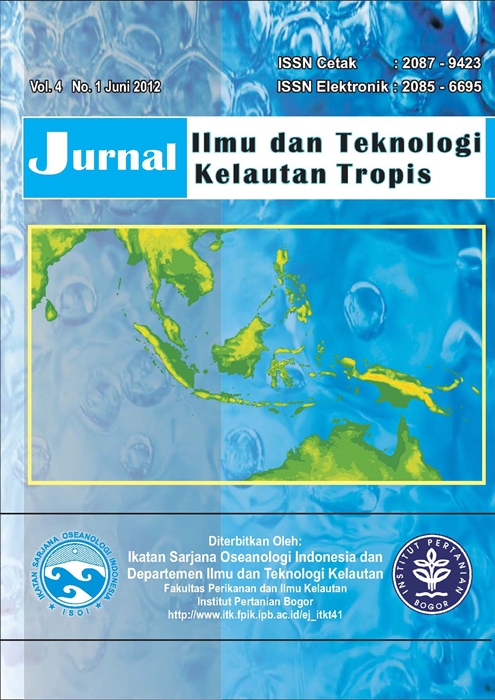FISIOLOGY ADAPTATION OF SANDY ANEMONE (Heteractis malu) EXPOSED TO ELEVATED TEMPERATURES: LABORATORY CONDITION
Abstract
Sandy anemone (Heteractis malu), belongs to Phylum Cnidaria, physiologically is very close to coral stone, which was a major component of coral reef ecosystems. As coral stone, Heteractis malu also has symbiotic algae (Zooxanthella). Physiologically, the alga symbiotic relationship of coral stone is almost similar with Heteractis malu. Maintaining Heteractis malu in the laboratory is relativly easier compared to that of coral stone. Advantages of the Heteractis malu vs. stone coral, its body is not covered by limestone makingit easier in processing analyses. The response of the anemone to stress is expected similar with coral stone. This research aims to analyze the response and adaptation of Heteractis malu to the temperature increase of 1 °C and 2 °C of the normal temperature (28 °C). The impact of temperature increases on Heteractis malu did not significantly affect the density of zooxanthellae, however, there was a significant increase of mitotic index. In addition, during a recovery process, Heteractis malu immune system did not show a significant increase based on its mitotic index results tended to decrease during the second phase of stress treatment.
Keywords: Adaptation, sandy anemone (Heteractis malu), temperature increase,, zooxanthellae
Authors
The author submitting the manuscript must understand and agree that the copyright of the article manuscript must be submitted/transferred to the Jurnal Ilmu dan Teknologi Kelautan Tropis. This work is licensed under the Creative Commons Attribution-ShareAlike 4.0 (CC BY-SA) International License in which the Author and Reader can copy and redistribute the material in any media or format, and remix, modify and build material for any purpose, but they must provide appropriate credit (citing articles or content), provide a link to the license, and indicate whether there is a change. If you mix, change, or create material, you must distribute your contribution under the same license as the original.


